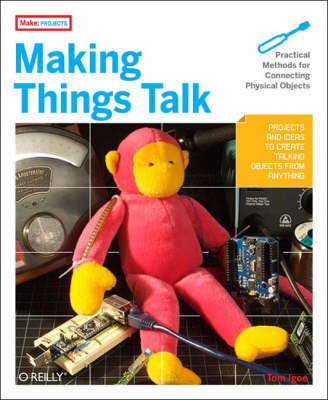Make: Projects
2 total works
Programming microcontrollers used to require an expensive development environment costing thousands of dollars and requiring professional electrical engineering expertise. Open-source physical computing platforms with simple i/o boards and development environments have led to new options for hobbyists, hackers, and makers. This book contains a series of projects that teach you what you need to know to get your creations talking to each other, connecting to the web, and forming networks of smart devices. Whether you need to plug some sensors in your home to the Internet or create a device that can interact wirelessly with other creations, "Making Things Talk" shows you exactly what you need. The projects in this book are powerful but inexpensive to build. The networking hardware covered here includes Ethernet, Wi-Fi, Zigbee, and Bluetooth. With a couple of microcontroller kits and the networking gadgets of your choice, you can make things and make them talk to each other!
Just as we identify things using information from our senses, so do computers. They can identify physical objects only by using information from their sensors. One of the best-known digital identification techniques is radio frequency identification, or RFID. The RFID tag pasted on the side of a book may seem like a universal marker, but what it means depends on who reads it. Based on the projects from the first edition of Making Things Talk (from the same author), this book shows you how to create projects with Arduino, Processing, and the Getting Started with RFID kit from Maker SHED to identify physical objects.

